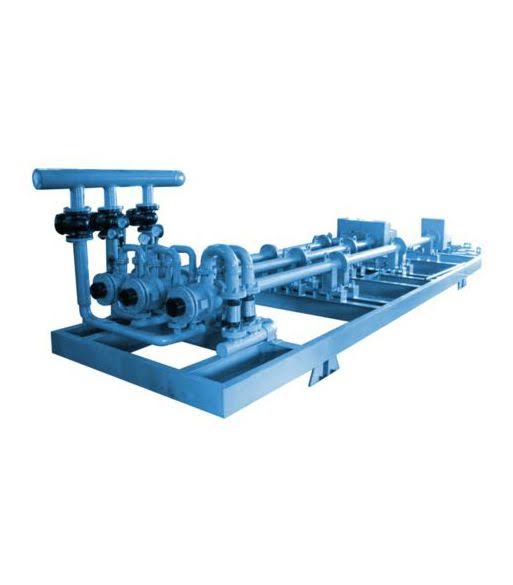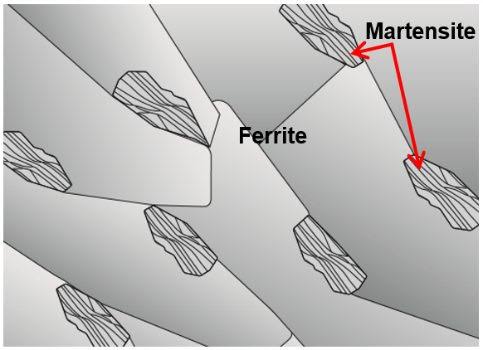Meta TechX Engineers -:
Discover how TMT Bar quenching enhances material properties. Learn about the process, calculating flow rates, and vital parameters required for effective heat treatment. Meta Blog
In the world of construction and engineering, the durability and strength of materials used play a crucial role. TMT bars, also known as Thermo-Mechanically Treated bars, have emerged as a popular choice due to their superior mechanical properties. However, to unleash their full potential, proper heat treatment is necessary. This is where the TMT Bar quenching system comes into play. In this article, we will delve into the concept of TMT Bar quenching, how it works, how to calculate flow rates, and the parameters required to enhance material properties.
TMT Bar Quenching: What is it?
TMT Bar quenching is a heat treatment process that aims to improve the mechanical properties of TMT bars, such as strength, ductility, and toughness. The process involves subjecting the heated bars to controlled cooling, followed by tempering. Quenching interrupts the transformation of austenite into pearlite and ferrite, resulting in a microstructure known as “martensite.” This unique microstructure is responsible for the enhanced properties of TMT bars.
How Does TMT Bar Quenching Work?
The TMT Bar quenching system comprises several stages, each playing a vital role in the overall process. Let’s take a closer look at these stages:
1. Heating
Before quenching, the TMT bars are heated to an optimum temperature in a continuous rolling mill. The precise temperature depends on the desired mechanical properties and the grade of steel being used.
2. Water Quenching
Once the bars reach the desired temperature, they are rapidly quenched by passing them through a series of water jets. The water quenching process cools the bars down rapidly, preventing the formation of unwanted phases and ensuring the formation of martensite.
3. Cooling Bed
After quenching, the bars are transferred to a cooling bed. Here, the bars are allowed to cool in a controlled manner, gradually reducing their temperature to room temperature. This controlled cooling process helps to relieve internal stresses introduced during quenching and ensures uniformity in the final properties of the bars.
4. Atmospheric Cooling
Once the bars reach room temperature, they undergo atmospheric cooling. This stage allows the bars to stabilize, further improving their mechanical properties.
5. Tempering
The final stage of the TMT Bar quenching system is tempering. The bars are reheated to a specific temperature and then cooled down slowly. This tempering process reduces the brittleness of the martensite, increasing its ductility and toughness.
Calculating Flow Rates and Required Parameters
To ensure the effectiveness of the TMT Bar quenching system, accurate calculations of flow rates and control of various parameters are essential. The following parameters need to be considered:
1. Water Flow Rate
Determining the water flow rate is crucial to achieve the desired cooling rate and prevent distortion or cracking of the bars. The flow rate can be calculated based on factors such as bar size, temperature, quenching quality requirements, and desired mechanical properties. Proper calibration and monitoring of the flow rate ensure consistent and optimal results.
2. Water Pressure
Controlling the water pressure is vital to optimize the cooling process. High-pressure water jets facilitate rapid cooling, promoting the formation of martensite. It is important to strike a balance between ensuring sufficient pressure for effective quenching and avoiding excessive pressure that could deform the bars.
3. Bar Speed
The speed at which the bars pass through the water jets affects the cooling rate and, subsequently, the microstructure and properties of the bars. The bar speed can be adjusted to achieve the desired cooling rate and mechanical properties.
4. Water Quality
The water used for quenching should meet specific quality standards, ensuring it does not negatively impact the bars. Controlling parameters such as water pH, hardness, and chemical composition is essential to avoid corrosion and surface defects.
Enhancing Material Properties Through TMT Bar Quenching
The TMT Bar quenching system offers several advantages, leading to enhanced material properties:
- Increased Strength: The martensitic microstructure formed during quenching imparts higher strength to the TMT bars. They can withstand greater loads and provide structural stability.
- Improved Ductility: The tempering process after quenching reduces the brittleness of martensite, increasing the ductility of the bars. This allows for better elongation and resistance to deformation.
- Enhanced Toughness: TMT Bar quenching improves the toughness of the bars, making them more resistant to impact and fracture. This property is crucial in earthquake-prone regions and high-stress applications.
- Consistent Properties: The TMT Bar quenching system ensures uniform cooling, resulting in consistent properties throughout the length of the bars. This uniformity translates into reliable performance in structural applications.
Conclusion
TMT Bar quenching is a critical heat treatment process that significantly enhances the mechanical properties of TMT bars. Through proper control of parameters such as flow rates, pressure, and bar speed, the desired material properties can be achieved. The resulting TMT bars offer increased strength, improved ductility, enhanced toughness, and consistent performance. As the construction and engineering industries continue to demand robust and reliable materials, TMT Bar quenching remains a proven method to ensure structural durability and safety.




